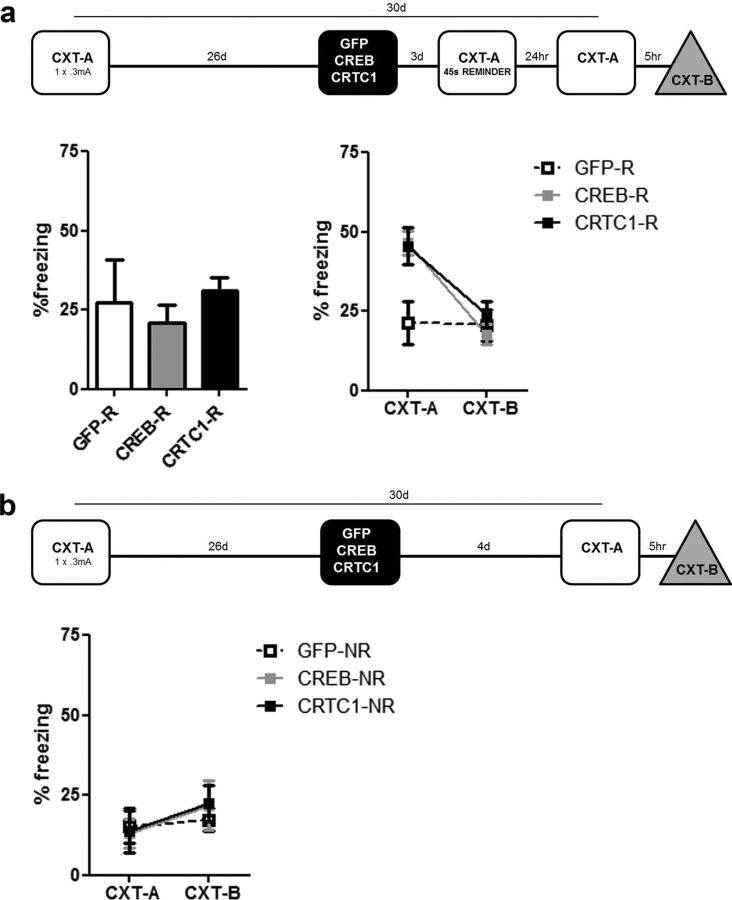Figure 4.
Increasing CRTC1 or CREB levels in DG enhances reconsolidation of an established contextual fear memory. a, Microinjection of CRTC1 or CREB vector before reactivation of an established weak contextual fear memory enhances subsequent memory expression in a context-specific manner. Naive mice were trained with a weak protocol (1 × 0.3 mA shock), and 26 d later were microinjected with vector (CRTC1-R, n = 10; CREB-R, n = 10; GFP-R, n = 10). Three days following vector microinjection, all groups showed similar low levels of freezing when initially re-exposed to the training context (for 45 s) to reactivate the memory (left graph). In subsequent test session (24 h later), mice with GFP vector showed low levels of freezing (in both contexts). However, mice with CRTC1 or CREB vector showed enhanced memory, which was context specific (right graph). b, Memory reactivation is necessary for the enhancement of an established memory by CRTC1 or CREB vectors (reconsolidation). Mice were trained as above, similarly microinjected with vectors, but not re-exposed to the training context (no reactivation, NR) after vector microinjection (CRTC1-NR, n = 6; CREB-NR, n = 6; GFP-NR, n = 6). During the subsequent test, all groups showed equally low levels of freezing. Means ± SEM.

